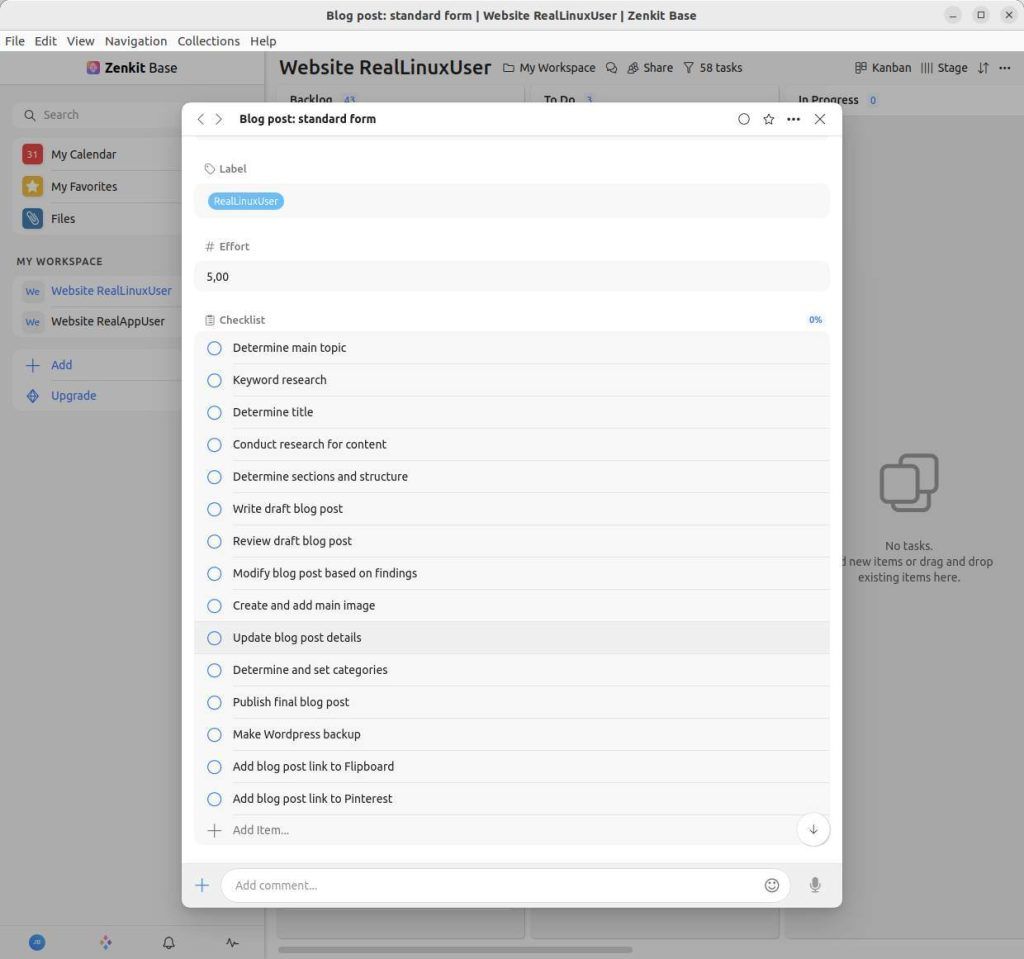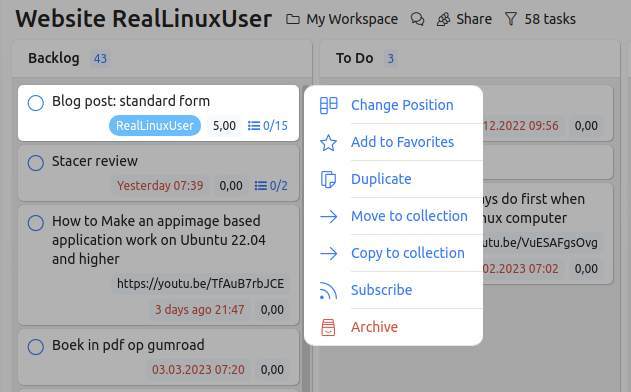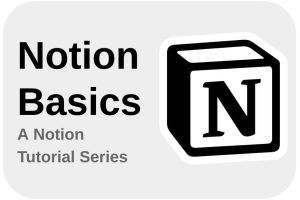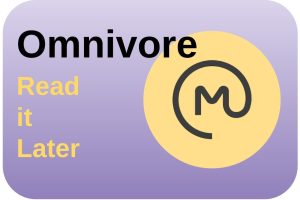Photo by Fernando Hernandez on Unsplash
I love SOPs, or for those unfamiliar with this abbreviation, Standard Operating Procedures. In my daily work, I am known for my love to write everything down and to try to centralize and distribute that information so that others can also benefit from it. It is wise to write a Standard Operating Procedure for all the knowledge which you already have that is procedure-based and that you or someone else will use several times in the future. I create SOPs in my daily work to keep knowledge safe, for knowledge sharing and repeatability. Also in my private life, I use SOPs for repeatability and reuse of knowledge, references, etc. In addition to recording recurring knowledge in SOPs, it is also important to try to record recurring activities in reusable standard to do items with sub-activities. In this article, I will explain the value of reusable to do items and how to Include Standard Operating Procedures in your To Do list.
Note: This article contains affiliate links. At no additional cost to you, this website will earn a small commission if you choose to click through and make a purchase via the linked website. For more information see the Affiliate Disclaimer.
Content of the article
- What is an SOP
- Why is an SOP important in task management
- Why is a standard repeatable to do item important
- How do you integrate your SOP into your standard repeatable to do item
What is an SOP
In my career as a developer, business analyst, and IT solution engineer, I have often spoken to people about their processes and procedures, in order to translate these into IT solutions. It often surprised me that many people do not really know what a process or procedure is. I have sometimes had quite exhausting discussions with people who felt that the work they did could not be standardized in clear process steps since they felt that their work is different every day. But after deeper conversations, it became clear that there were a lot of activities that recurred time and time again and also had to be performed in a specific order. And here the concept of Standard Operating Procedure emerged to ensure that these standard recurring activities could also be easily understood and performed by future employees, but also improved and optimized by refining them time and time again.
A standard operating procedure (SOP) is a set of steps and corresponding descriptions that explain exactly what you have to do from a starting point to a final result. Think of a recipe to make pasta or a manual to assemble a LEGO castle. These kinds of descriptions can be executed repeatedly and result in the same end product with the same quality. An SOP has the advantage that everyone performs actions in the same way and errors are therefore reduced. In addition, after the SOP has been created and made available, you no longer have to think in advance about how to do something. That has already been done.
Why is an SOP important in task management
In my opinion, an SOP is strongly connected to tasks and to do lists. Looking at myself, I like to write articles for my websites reallinuxuser.com and realappuser.com, and I also like to write articles for magazines, and I really enjoyed writing my first book “Linux for the rest of us“. Also, my next book is underway. One of the characteristics of this type of activity is its recurrent character. For my book, I wrote 30 chapters, and for each chapter, I went through the same standard steps every time. So my SOP for writing each chapter looked something like this:
- Decide on the main topic for the chapter
- Record outline for chapter
- Write draft chapter
- Collect and place supporting images
- Run the chapter through Grammarly
- Review draft chapter
- Rewrite chapter
- Have test readers read the chapter
- Process feedback from test readers
- Save the final version chapter safely
I did not perform these steps only once but applied them to all 30 chapters I wrote. To make sure that all these steps were completed for every chapter before finishing my book, I made sure that these steps were part of my Book writing SOP. This way I don’t forget which steps I have to repeat and the quality at the end of the process is better and more predictable.
Why is a standard repeatable to do item important
Based on another example of one of my SOPs, which is writing blog posts, I want to clarify why a standard repeatable to do item is important. Topics for blog posts can pop into my head at any time of the day and in any situation. In order not to forget these ideas, I save them directly (see also the Cature section in my article “How BASB, GTD, and Scrum help me to manage my productive life” for more information on the importance of dumping your brain) in Zenkit and use a standard reusable to do item with predetermined sub-activities for all steps that need to be done. This looks like the standard form below:

This is where you start to see the benefit of these standard reusable to do items with predefined sub-tasks. If I create a new main task every time and have to come up with and add the above 15 sub-tasks every time, then I lose a lot of valuable time. By making it a reusable standard form, I’m done in a few seconds and I can spend my time and thoughts on other things. I just open the menu for this standard item and select Duplicate to create a new item with exactly the same sub-tasks.

By the way, personally, I prefer to use a Kanban approach for these types of more extensive projects instead of using a basic to do list. Read more about using a Kanban approach in my article “How to be more productive with Kanban and what are my favorite Kanban apps“.
My preferred application to manage all my projects and long-term activities is Zenkit. In future articles, I will dive much deeper into everything that Zenkit has to offer and what every application in the Zenkit Suite can do for your productivity workflow, so keep an eye on my website for my upcoming Zenkit Tutorial Series. For more information on Zenkit go visit the Zenkit website. There is a lot to find over there like their blog, documentation, tutorials, and newsroom.
You can click on the link below (read Affiliate Disclaimer) to try out one or more of the applications in the Zenkit Suite for free.
How do you integrate your SOP into your standard reusable to do item
Although the previous section already gave plenty of insight in how to integrate your SOP into your standard to do item, below I want to give you a SOP on how to integrate your own SOP.
- Determine types of tasks that you predict will not be a one-off and could benefit from standard registration in the future because of their repeatable character.
- Determine which fixed recurring sub-activities are necessary to successfully complete these tasks and to meet the minimum quality requirements.
- Now that you have defined a generic main task and it is also clear which steps are required to complete this task, you will create a standard task with subtasks in your preferred to do or Kanban application that will serve as a template for future tasks.
- Now that you have a generic task with associated subtasks available as a default template, every time you want to commit a new task of this type, make a copy of this template and rename the title to the subject you want to commit the task to.
- Now that you have defined tasks in your task management app based on a standard template, you can do the actual work by simply executing and crossing out the subtasks step by step.
- When you use these standard tasks with subtasks based on your SOPs more often, you will notice that some subtasks might be better. Adjust them so that your default template keeps getting better and better suited to your own use cases.
Final words
As mentioned before, I love writing and using Standard Operating Procedures. They help immensely in simplifying your productive life. Repeatability and recording ensure that you have to think much less about recurring activities.
Your mind is for having ideas, not holding them
David Allen
I hope you enjoy creating your own SOPs and integrating these SOPs into your task management.



